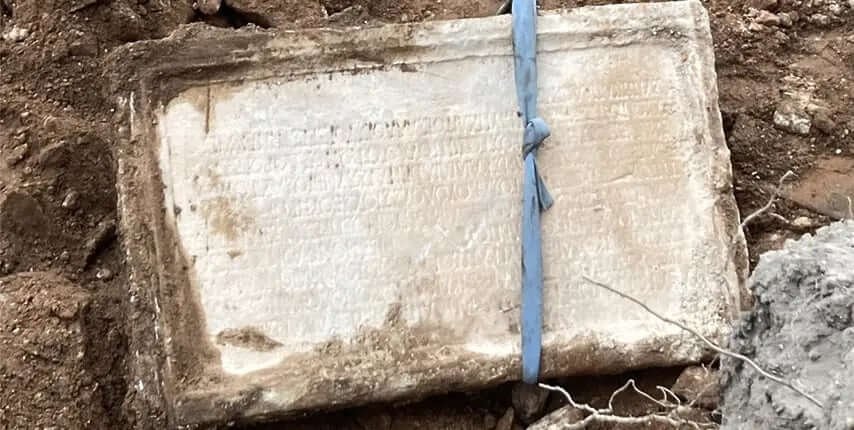In a recent archaeological discovery in the Roman Baths of Hisarya, a quaint resort town in Bulgaria's Plovdiv province, archaeologists unearthed a remarkable 1,900-year-old marble slab adorned with an ancient Greek inscription. This inscription sheds light on the administration of the province of Thrace and the origins of these baths.
Located approximately 40 kilometers from Plovdiv, Hisarya boasts a rich history dating back to the 4th century BC when it was established by Emperor Diocletian, who also bestowed upon it the name Dioclecianopolis. The town is known for its remarkably well-preserved Roman baths, which were utilized for thermal treatments during ancient times. With 22 mineral water sources featuring diverse physical-chemical compositions and temperatures renowned for their healing properties, Hisarya has long been a hub of wellness.
The marble slab, found within a designated area, is a tribute to Emperor Antony Pius and Marcus Aurelius. It provides precise information that the baths were constructed in the year 152 AD and that the financial matters of the province of Thrace were overseen by Volusius Severus. This inscription was erected during the governance of Galonius Fronton, the governor of Thrace, as a generous donation by Elia Bendida and her husband in support of the thermal baths adjacent to the mineral springs.
This discovery corroborates prior assertions regarding the baths' construction during the mid-2nd century. Dr. Nikolay Sharankov, an epigrapher from Sofia University, is diligently deciphering the inscription, a task entrusted to him by the Municipality of Hisarya.
Associate Professor Mitko Madjarov, Director of the Hisarya Archaeological Museum, emphasized the significance of the find. He described the inscription, measuring 1.3 x 70 cm, as part of an imperial cult, suggesting its placement in a sacred space—namely, a deep pool filled with an abundance of marble and cipher slabs.
The Roman Baths gained prominence after the region was designated as imperial property, ultimately becoming the spa capital of Thrace and the Balkans.
To date, approximately 3.5 decares (units of land area) within the Roman Baths have been excavated and explored. According to Assoc. Prof. Madjarov, this valuable artifact may pave the way for the discovery of further treasures, such as statues, in the future.
Experts regard these findings as highly valuable, as they provide insight into the historical significance of the thermo-mineral deposits in the ancient city of Diocletianopolis.
This discovery marks the third epigraphic monument uncovered at the site during rescue archaeological excavations conducted under the auspices of the Municipality of Hisarya, as part of the operational program Regions in Growth. The marble slab is now showcased in a special exhibit at the Archaeological Museum.
This remarkable find not only enriches our understanding of the past but also underscores the cultural and historical significance of the region.








